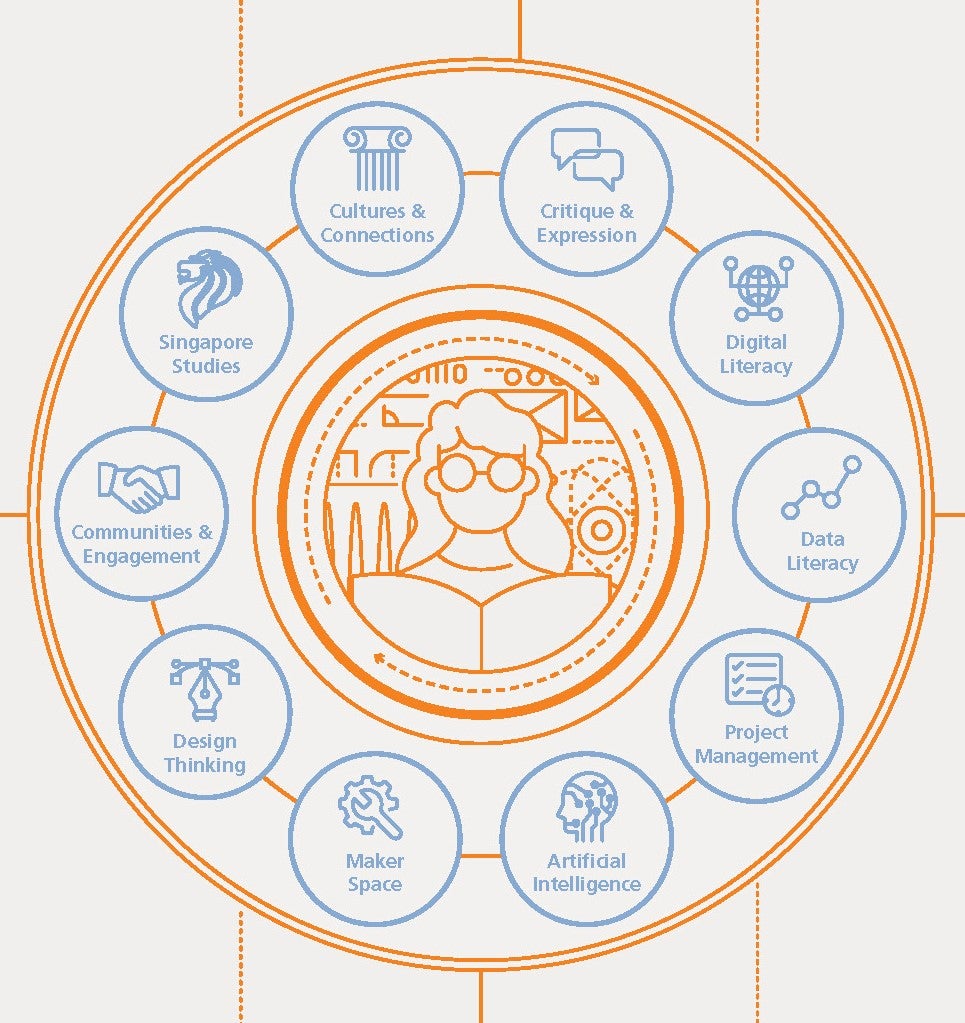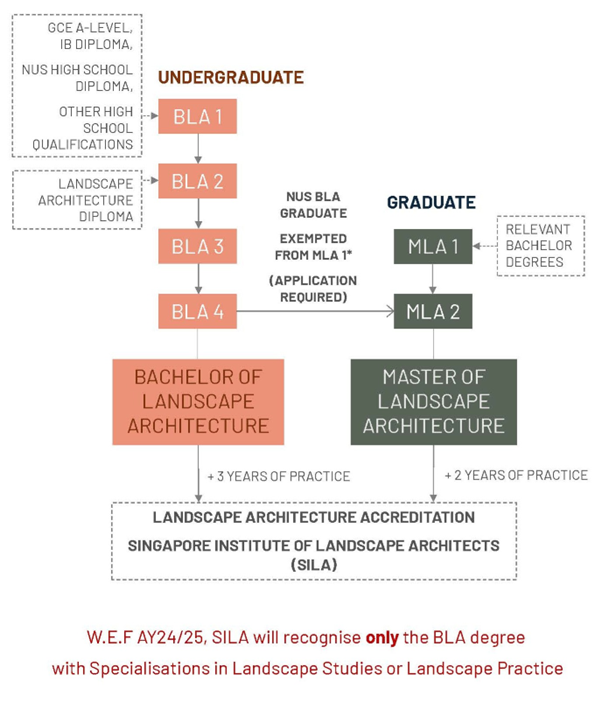Bachelor of Landscape Architecture
CURRICULUM AND COURSE STRUCTURE (From AY2025/26 cohort onwards)
College of Design and Engineering (CDE) adopt a new undergraduate curriculum structure for students enrolled in the new academic year starting in August 2025. Students will read a total of 160 units (or the equivalent of 40 courses) comprising:
1. Common Curriculum: 40 units (or the equivalent of 10 courses)
2. Primary Major: 80 units (or the equivalent of 20 courses)
3. Unrestricted Electives: 40 units (or the equivalent of 10 courses)
These aim to provide CDE students with a comprehensive and well-rounded education, preparing them for success in their chosen careers and beyond.
 |
The Common Curriculum consists of 10 carefully curated pillars to give a solid foundation in interdisciplinary skills. We emphasise instilling lifelong skills in data and digital literacy, design thinking, and critical thinking via the following pillars:
1. Design Thinking
2. Maker Space
3. Artificial Intelligence
4. Project Management
5. Data Literacy
6. Digital Literacy
7. Critique and Expression
8. Cultures and Connections
9. Singapore Studies
10. Communities and Engagement
 |
Curriculum Overview
In the first year, students are introduced to foundational concepts in design: ways of sensing, reading, understanding, and interpreting fundamental landscape elements in forms, structures, materiality, and functions. A basic grounding in the first year includes introduction of landscape architecture, history and theory, and essential landscape representation techniques.
In the second and third years, students progress to acquire more advanced skills in site representation, site analysis, design representation specialised software, and spatial analytical tools. Students begin to synthesize landscape forms, structures, processes and functions with more specialised knowledge in planting design, landscape engineering, and advanced water sensitive urban design.
In the fourth year, students decide how to utilise their unrestricted elective space. Those who stick with landscape architecture offered a choice of two specialisations, one in Landscape Studies and another in Landscape Practice. Both of which further enrich and deepen a students knowledge in the field and to prepare them to enter the workforce.
Upon completion of the four-year programme, students will receive the Bachelor of Landscape Architecture (BLA) and are eligible to apply for the MLA programme with direct admission into the second year of MLA if they fulfil the necessary criteria for advanced placement credits (APCs).
Courses
SEMESTER 1
|
||||||
SEMESTER 2
|
Year 2
SEMESTER 1
|
||||||
SEMESTER 2
|
Year 3
SEMESTER 1
|
||||||
SEMESTER 2
|
Year 4
| LAD4008 Design 7 | 8 Units |
| LAD4010 Design 8 | 8 Units |
| LAD4003 Landscape Construction II | 4 Units |
Specialisation in Landscape Studies (Design 7 + Pick 3 Electives)
Programme Structure
A candidate will be awarded the B.LA upon completing a minimum of 160 Units, including NUS required courses. Upon completion of the four-year programme, students are eligible to apply for the MLA programme. Successful applicants who meet the eligibility criteria will be exempted from the first year of the MLA programme. These students can then expect to graduate with an MLA upon completion of the second year of the MLA programme.
B.LA students pursue the following eight semester course of study:

BLA Electives
Please refer to the latest BLA Handbook for the list of electives.
NUS Required Courses
GENERAL PROGRAMME
|